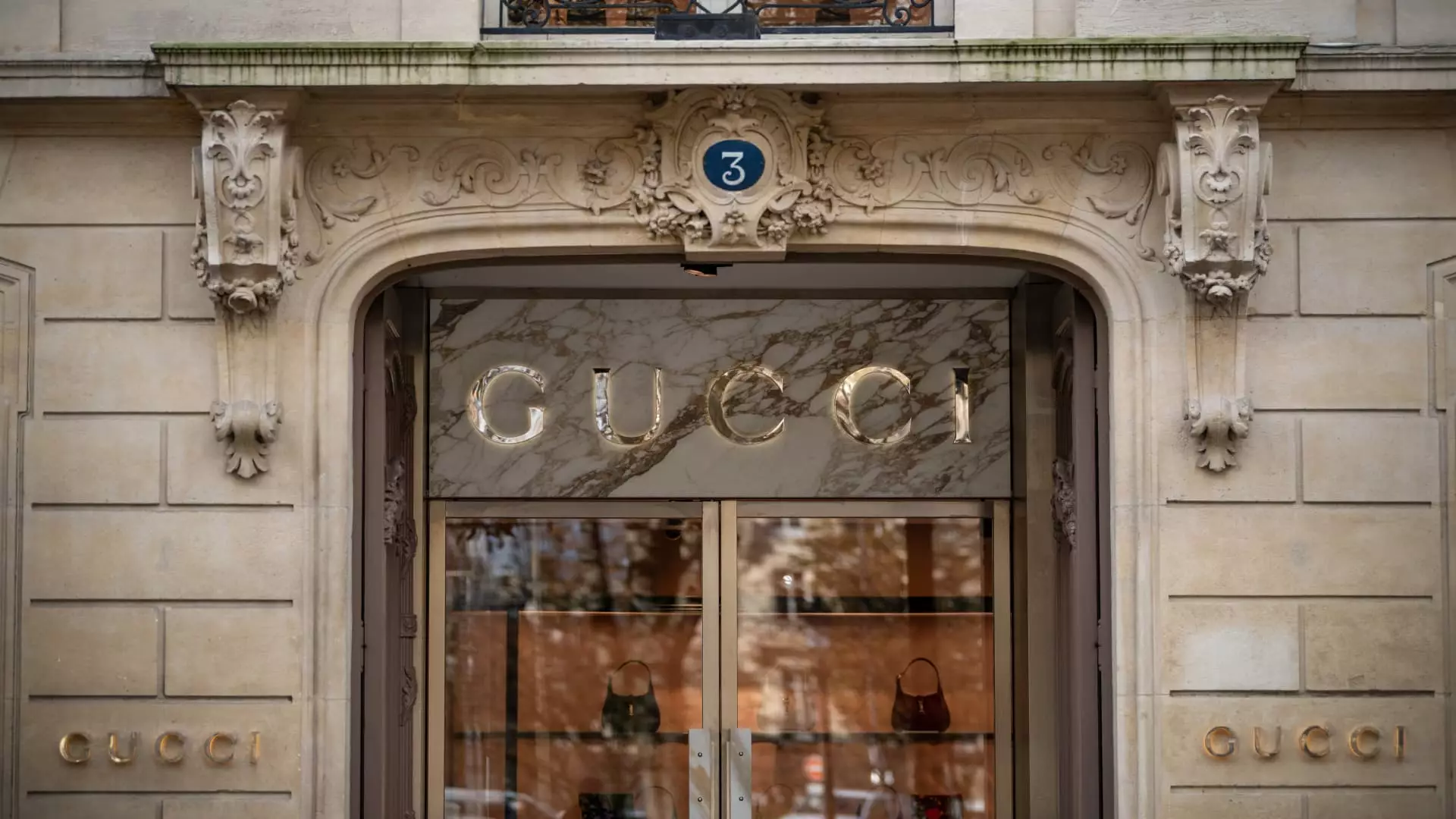What has long been branded as a bastion of exclusivity and affluence seems to be cracking at its very core, as Kering, the powerhouse behind luxury labels like Gucci, reported a staggering 14% drop in first-quarter revenues. This revelation, amounting to 3.9 billion euros, has laid bare the fragility of not just Kering’s operations but the entire luxury sector. The numbers have roared like an angry lion but with a soft and troubling whimper behind them: the beloved perception of luxury goods as safe investments for the wealthy is rapidly deteriorating, sending ripples of concern across the industry.
Kering’s decline was not merely an isolated incident; it serves as a precursor to broader economic challenges that even the most prestigious brands are unable to escape. Once viewed as weatherproof against the vicissitudes of macroeconomic shifts, luxury brands now find themselves entangled in a web of rising inflation and wavering consumer confidence. While one might have assumed that affluent buyers would remain unfazed by market downturns, the reality reveals a different narrative—a consumer sentiment that is cautious even among the elite.
Gucci’s Identity Crisis
At the heart of this turmoil is Kering’s flagship brand, Gucci, which has taken a dramatic hit with a 25% reduction in sales. The irony is palpable: a brand synonymous with high fashion has become emblematic of decline. The company’s recent struggles echo a more profound identity crisis within Gucci—a brand that, although revered, appears increasingly out of touch with contemporary consumer desires. The hurried appointment of Demna Gvasalia, tasked with revitalizing the label, seems more like a desperate gamble than a strategic move. The shadows of past controversies, including his connection to a problematic ad campaign at Balenciaga, loom ominously over this transition.
This dire situation is further exacerbated by Gucci’s overwhelming reliance on the Chinese market, which has seen significant contractions. As consumer spending in Asia wanes, Kering’s inability to navigate these treacherous waters reveals a perennial vulnerability—one that many luxury brands should be wary of. What was once the golden child of luxury is now a tech-battered teenager, struggling to impress and connect in a world that values authenticity.
The Underlying Economic Storm
The current downturn in Kering’s fortunes reflects broader economic realities that cannot be ignored. While luxury brands were historically believed to offer more stability in recessionary periods, the evidence suggests otherwise. The likes of LVMH might still have the upper hand due to their diversified portfolio and brand resilience, but Kering’s falling sales paint a stark picture of vulnerability. Analysts have warned that tariffs and weakened stock markets will only prolong the agony for brands already grappling with declining sales.
As Adam Cochrane from Deutsche Bank rightly points out, “we see this further postponing a recovery in luxury demand.” It raises a crucial question: Can traditional luxury houses adapt quickly enough to the turbulent times ahead? Or are they too wedded to the notions that once made them successful, failing to recognize a world that demands innovation and authenticity as prerequisites for survival?
Consumer Sentiment and Price Elasticity
In a landscape where luxury brands previously seemed untouchable, consumer sentiment is turning, igniting fears around pricing strategies. It is unsettling to consider that Kering could be far less equipped to handle price increases due to tariffs compared to other luxury giants. The notion of “price elasticity” has become a key term in discussing the new realities of luxury retail. With weakened customer bases and a changing attitude toward consumption, the expected ability to pass on higher costs to consumers is questionable.
This relegation of luxury brands into the precarious territory of having to juggle pricing and consumer reactions is a daunting challenge. Brands like Kering, still reeling from poor sales and strategic misfires, may find themselves at a disadvantage, further amplifying doubts about their adaptability.
The dismal figures released by Kering are not just numbers—they are signals. Signals of a changing economic climate, of shifting consumer priorities, and of an urgent need for transformation within an industry that has long been gliding on the coattails of its past successes. The luxury segment must urgently recalibrate—lest it risks being left behind in a world that seemingly champions authenticity over affluence.

